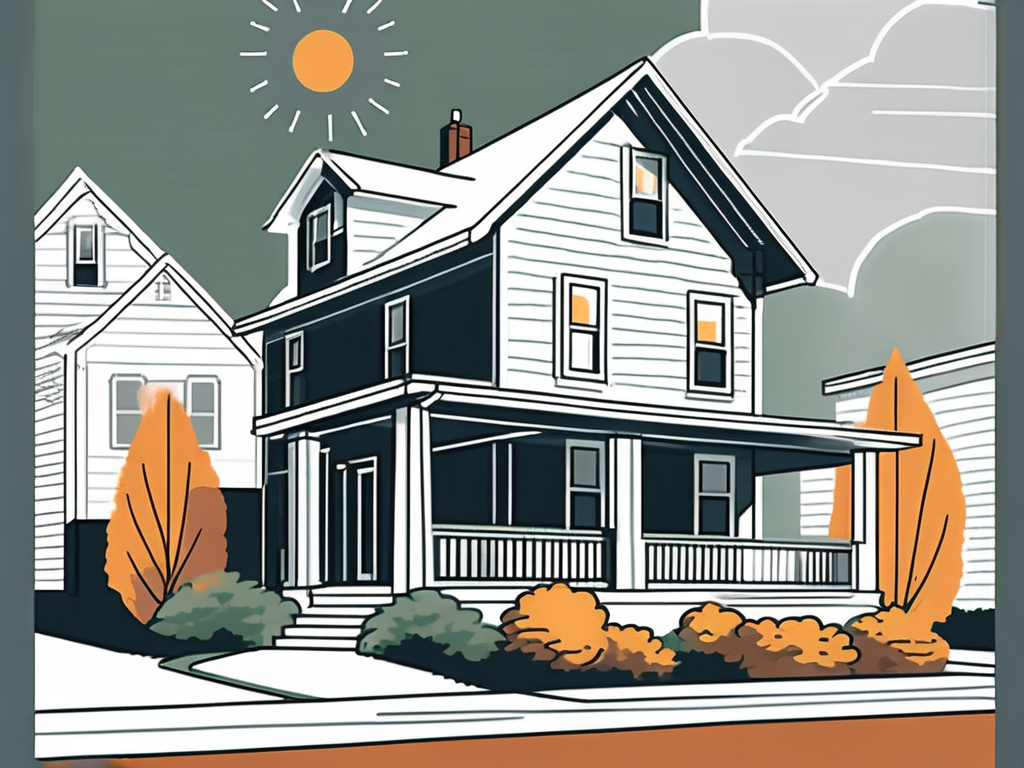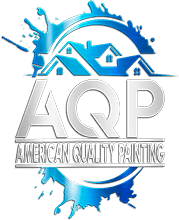Ohio’s climate, characterized by its humid continental type, presents homeowners with unique challenges when it comes to maintaining the exterior of their homes, particularly the paint. Understanding how the weather conditions in Ohio affect paint can help homeowners make informed decisions about preserving their home’s exterior.
Understanding Ohio’s Unique Climate
The climate in Ohio varies significantly throughout the year, influencing various aspects of home maintenance, especially the condition of exterior paint. With its four distinct seasons, each bringing different weather patterns, homeowners must be aware of how these changes can impact their home’s exterior.
Seasonal Weather Patterns in Ohio
Ohio experiences cold winters, hot summers, and a mix of wet and dry conditions in spring and fall. During summer, high humidity levels combined with intense sunlight can cause the paint to deteriorate quickly. On the other hand, winter often brings freezing temperatures and snow, which can pose additional risks to the integrity of paint.
Each season has its unique temperature ranges and moisture levels, making it crucial for homeowners to adapt their maintenance routines accordingly. Understanding these seasonal shifts can help in planning when to perform maintenance tasks or apply new paint. For instance, late spring is often ideal for painting, as temperatures are warming up but not yet at their peak, allowing for better drying conditions. Conversely, fall can also be a good time to touch up paint, as the cooler temperatures help prevent the paint from drying too quickly, which can lead to a poor finish.
The Impact of Humidity and Rainfall
Ohio’s humidity levels can significantly affect exterior paint. High humidity encourages mold and mildew growth, which can lead to early paint peeling and degradation. Rainfall, frequent in the spring and summer months, can wash away protective coatings or lead to water damage, further compromising the paint’s lifespan.
Homeowners should monitor weather forecasts and plan paint jobs during drier periods to ensure optimal adhesion and drying times, which are essential for a long-lasting finish. Additionally, using high-quality, moisture-resistant paint can provide an extra layer of protection against Ohio’s unpredictable weather. It’s also wise to consider the type of surface being painted; for example, wood siding may require different treatments compared to vinyl or metal surfaces, each responding differently to humidity and moisture exposure.
Temperature Fluctuations and Your Home
Temperature fluctuations play a critical role in the expansion and contraction of paint. In Ohio, the variance between day and night temperatures can be significant, especially in the spring and fall. This constant change can lead to cracks forming in the paint film, allowing moisture to seep in and cause further damage.
Understanding these temperature dynamics can prepare homeowners to choose the best times for exterior work, ensuring their paint remains intact and aesthetically pleasing. Moreover, it’s essential to consider the insulation and ventilation of the home, as these factors can influence how temperature changes affect the exterior. Proper insulation can help maintain a more stable temperature within the home, reducing the risk of thermal shock to the exterior paint. Homeowners may also want to invest in regular inspections and maintenance to catch any potential issues early, ensuring that their home’s exterior remains protected against Ohio’s variable climate.
The Effect of Ohio’s Climate on Exterior Paint
Ohio’s climate can lead to several challenges that affect the quality and longevity of exterior paint. From moisture damage to sun exposure, it’s important to recognize how these factors can compromise a home’s facade.
How Weather Conditions Deteriorate Paint Quality
Weather conditions, including heavy rain, snow, and even wind, can all play a role in the deterioration of paint quality. For instance, when rain falls on fresh paint, it can wash away vital ingredients that help with adhesion and fade resistance. Over time, consistent exposure to adverse weather can weaken the paint and lead to fading and peeling.
Regular inspection of painted surfaces allows homeowners to identify early signs of wear and damage, enabling them to take corrective action before more extensive repairs are needed.
The Role of Sun Exposure in Paint Damage
Ohio’s sunny days, particularly in the summer, can be harsh on exterior paint. Ultraviolet (UV) rays from the sun accelerate fading and deterioration. Dark colors are especially vulnerable as they absorb heat and UV radiation more than lighter tones.
Choosing the right color and type of paint with a high UV protection factor is essential for maintaining a vibrant exterior. Homeowners should consider repositioning outdoor furniture or structures to provide shade and reduce direct sun exposure on painted surfaces.
The Impact of Cold Weather on Paint
Cold weather poses unique challenges for exterior paint in Ohio. When temperatures drop, especially below freezing, paint does not adhere properly to surfaces. This can lead to cracking and shattering of the paint film as it becomes brittle in low temperatures.
Additionally, moisture from snow or ice can find its way beneath the paint, leading to complications such as blisters or peeling. Homeowners should wait for the appropriate temperatures before embarking on any exterior painting to ensure a successful application.
Choosing the Right Paint for Ohio’s Climate
When selecting paint for a home in Ohio, it’s essential to consider the climate’s unique demands. The right choice can significantly extend the life of your home’s exterior while enhancing its appearance.
Factors to Consider When Selecting Paint
There are several factors to keep in mind when choosing paint. The most important considerations include durability, finish types, and the paint’s ability to withstand harsh weather conditions. Homeowners should opt for paints specifically formulated for exterior use that can endure the swings of Ohio’s climate.
Moreover, it’s wise to check the manufacturer’s specifications and look for paints that are designed to handle moisture resistance, fading, and temperature changes.
The Importance of UV-resistant Paint
UV-resistant paint is a crucial investment for Ohio homeowners. With the risk of intense sunlight during the summers, opting for paint that contains UV inhibitors can help protect your home’s exterior. These formulations reflect harmful rays and reduce fading, ensuring that colors remain vibrant longer.
Using quality UV-resistant paint not only enhances the durable appearance of your home’s exterior but also reduces the frequency of repainting, ensuring longevity and cost-effectiveness in the long run.
Weatherproof Paints: Are They Worth It?
Weatherproof paints offer enhanced protection against Ohio’s unpredictable climate, which can include heavy rains and varying temperatures. While they may come at a higher initial cost, the long-term benefits often outweigh the expenses.
Such paints act as barriers, protecting surfaces from moisture infiltration and extreme temperatures. By investing in weatherproof paint, homeowners can minimize maintenance costs and extend the lifespan of their paint jobs, making it a worthwhile consideration.
Protecting Your Home’s Exterior Paint in Ohio
To ensure that the exterior paint lasts as long as possible, homeowners in Ohio should adhere to a series of preventative measures and maintenance routines. Consistent care can significantly mitigate the impact of weather on their homes.

Regular Maintenance and Inspection
Regular maintenance is vital in preserving the condition of exterior paint. Homeowners should routinely inspect their homes for signs of wear, such as peeling, cracking, or discoloration. Quick touch-ups can help prevent further deterioration and the need for a complete repaint sooner than necessary.
Cleaning the exterior surfaces at least once a year is also beneficial, as it removes debris, mold, and mildew that can trap moisture and cause paint failure.
The Role of Professional Painters
Hiring professional painters can be instrumental in ensuring that the right techniques and products are used for the job. Their expertise can provide invaluable insights into the optimal types of paint for Ohio’s climate and how to prepare surfaces correctly. A professional can also ensure that the application is performed in conditions that maximize the paint’s longevity.
Ultimately, professional help can lead to a high-quality finish that not only looks great but also withstands Ohio’s fluctuating weather patterns.
When to Repaint Your Home’s Exterior
Determining when to repaint your home’s exterior requires vigilance and understanding of the signals painted surfaces provide. Homeowners should repaint when they notice significant signs of wear, such as fading, discoloration, or extensive peeling. Generally, homes should be repainted every 5 to 10 years, depending on the paint quality and local climate conditions.
Proactive planning around when to repaint can save time and costs in the long run, ensuring that homes remain beautiful and well-protected from Ohio’s various elements.

